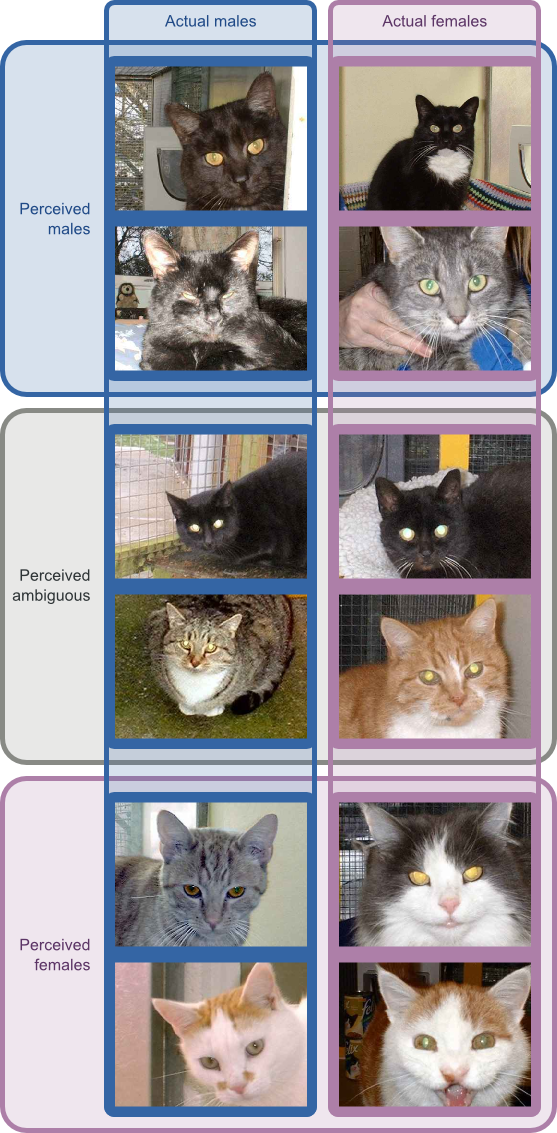I recently came across this awesome optical illusion, first described by Stuart Anstis. Two bars, one red and one blue, move horizontally across the display. If a specific type of background texture is present, the two rectangles appear to move in anti-phase: When the red rectangle moves quickly, the blue one grinds to a halt, and vice versa. This is illusionary, of course, and the effect is gone when the background texture is removed.
The two rectangles resemble a pair of stepping (or shuffling) feet, hence the name: the stepping feet illusion. (The effect is strongest for some people if you don't look directly at the rectangles.)
The explanation for this illusion appears to be fairly straightforward (but see [1]). And, as any good illusion, it provides some insight into how our visual system works.
The crux is that the illusion will not work with just any pair of colours: There must be a luminance difference. Put differently, one stimulus must be bright (the blue rectangle in this case) and the other must be dark (the red one). In addition, there must be a comparable luminance difference in the background, which is achieved here through a pattern of alternating light and dark bands.
Now, let's say that the front and hind edges of the stimuli are on a dark band, as in a) in the figure below. In this situation, there is little contrast between the side edges of the red stimulus and the background (both are dark). Because of …

 The diversity of the issues that Philip Ball takes on in his trilogy on nature's patterns is overwhelming. Most of them cannot even be said to have much in common: Jupiter's red spot cannot be explained in the same way as the shape of a honeycomb cell. Yet, despite his eclectic subject matter, Philip Ball manages to tell a coherent story. One that goes far beyond stamp collecting of interesting factoids.
The diversity of the issues that Philip Ball takes on in his trilogy on nature's patterns is overwhelming. Most of them cannot even be said to have much in common: Jupiter's red spot cannot be explained in the same way as the shape of a honeycomb cell. Yet, despite his eclectic subject matter, Philip Ball manages to tell a coherent story. One that goes far beyond stamp collecting of interesting factoids. Well... I don't know, and perhaps it is just a matter of style without any real reason. Fashion, in a sense. But it does strike me that this is a relatively new phenomenon, and that scientists in the past were much more equivocal in their writing. The quite recent past, even. Take, for example, Michael Posner, who wrote in the abstract of his seminal 1980 paper Orienting of Attention that '(...) the possibility is explored that (...)'. Or Giacomo Rizzolatti, of mirror neuron fame, who wrote back in 1987 that '(...) the hypothesis is proposed that postulates (...)'. Both of these sentences (which were of course cherry-picked for the occasion) convey a modest degree of belief in ones own theory and/ or findings: I believe in X, but I could be wrong.
Well... I don't know, and perhaps it is just a matter of style without any real reason. Fashion, in a sense. But it does strike me that this is a relatively new phenomenon, and that scientists in the past were much more equivocal in their writing. The quite recent past, even. Take, for example, Michael Posner, who wrote in the abstract of his seminal 1980 paper Orienting of Attention that '(...) the possibility is explored that (...)'. Or Giacomo Rizzolatti, of mirror neuron fame, who wrote back in 1987 that '(...) the hypothesis is proposed that postulates (...)'. Both of these sentences (which were of course cherry-picked for the occasion) convey a modest degree of belief in ones own theory and/ or findings: I believe in X, but I could be wrong.![A random scientist (Source: [url=http://commons.wikimedia.org/wiki/File:Bundesarchiv_Bild_183-M0719-0506,_Institut_f%C3%BCr_Wasser-_und_Lufthygiene,_Untersuchung_einer_Wasserprobe.jpg]Wikimedia Commons[/url])](/images/stories/blog/misc/scientist.jpg) Which is what I did over the weekend: I downloaded information about scientific articles. Names, authors, abstracts (summaries), journal titles, etc. And lots of it. I figured I would eventually get banned for abusing the PubMed service, but I didn't, and the end result is a database containing 257.535 articles published between 1950 and 2010 in 43 academic journals, broadly focused on neuroscience and cognitive psychology [1]. To the extent that PubMed has a complete index, this should include a large proportion of all articles published between those years in those journals.
Which is what I did over the weekend: I downloaded information about scientific articles. Names, authors, abstracts (summaries), journal titles, etc. And lots of it. I figured I would eventually get banned for abusing the PubMed service, but I didn't, and the end result is a database containing 257.535 articles published between 1950 and 2010 in 43 academic journals, broadly focused on neuroscience and cognitive psychology [1]. To the extent that PubMed has a complete index, this should include a large proportion of all articles published between those years in those journals.